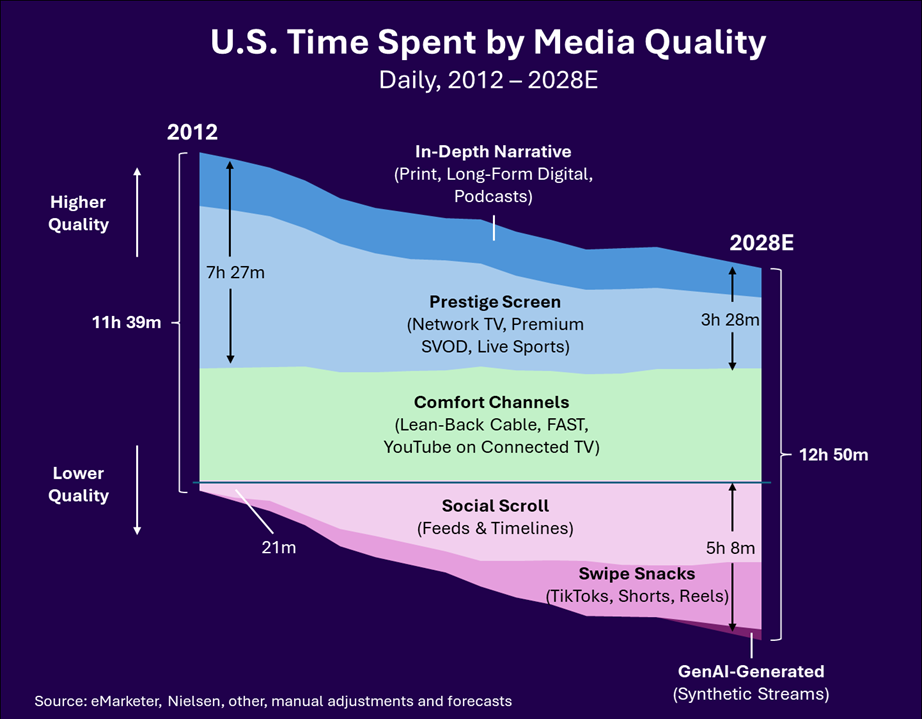The Decline of Media Quality
You Can’t Fight Gravity
Even the New York Times says readers now spend more time on its games than reading the news.
Let that sink in.
In 2012, Americans spent 7.5 hours/day with high-quality content: journalism, prestige TV, long-form podcasts.
By 2028, that number is projected to fall by more than 50%, to just 3.5 hours/day.
Meanwhile, time spent at the bottom (social feeds, swipeable video, synthetic content) has gone from essentially zero to now exceed 5 hours/day.
We didn’t just get more content.
We got pulled downward by a force more powerful than choice: frictionless optimization.
⸻
This isn’t a chart of platforms.
It’s a chart of media quality.
I rearranged the typical time-spent view, which usually shows minutes by platform or device, to focus instead on content quality, irrespective of platform.
From high-intention formats at the top to low-friction engagement at the bottom.
Over time, attention has slid downward.
Not because we were told to scroll,
but because we’re programmed to.
⸻
Until now, we wrote algorithms to optimize computers.
Now algorithms are writing code to optimize us.
It sounds like a Black Mirror episode (Netflix, call me), but it’s already happening.
Before GenAI, algorithms controlled what filled our feeds, but they still relied on humans to make the content.
Now?
AI doesn’t just curate the feed.
It creates the content.
And the code it writes isn’t in Python or Java.
It’s written in sight, sound, and motion.
It doesn’t optimize for truth or depth.
It hijacks emotion. It maximizes dopamine.
The program runs on our senses.
And the instructions are simple:
• Keep scrolling.
• Watch the next ad.
• Click “buy.”
• Vote for a politician.
We used to program the machines.
Now the machines are programming us.
⸻
I hope Doug Shapiro is right, but I doubt it.
Doug says “trust is the new oil” and predicts we’ll shift back to high-quality, trusted formats to escape the flood of AI-generated noise.
And I hope he’s right.
But if this chart tells us anything, it’s that we don’t consume what we say we want.
We consume what’s immediate.
What’s easy.
What hits.
⸻
So… what do we do?
You can’t fight gravity.
• If Big Tech is pressured to pull us back up the stack, a startup will rush in to serve the bottom.
• If the U.S. clamps down, another country will fill the void.
So the question isn’t whether the slide continues.
It’s whether it’s futile to resist it… or noble to try.
That’s the tension I’m sitting with.
